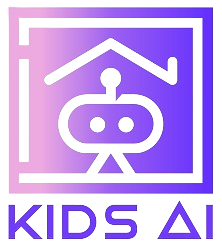In this edition of Kids AI Interviews Series, Evren Yiğit is interviewing Yeşim Kunter, a renowned play expert and futurist. With her extensive background in toy design, multimedia, and strategic innovation, Yeşim offers a unique perspective on integrating AI into playful experiences. As we explore the future of play and the evolving role of technology, our conversation will delve into ethical considerations, cultural sensitivity, and the transformative potential of AI in enriching children’s learning and play. Join us as we navigate these exciting and critical topics with Yeşim.
Evren Yiğit: Welcome Yeşim. Let’s straight dive into the topic generally. How do you envision AI transforming traditional play experiences for children in the coming years?
Yeşim Kunter: This is a big question! Answering it in just a couple of sentences will be challenging, but I’ll give it a try.
First, we need to define what we mean by “play” and the context of “traditional play experiences.” Play is a vehicle for making sense of the world around us. It is intrinsic, self-motivated, explorative, imaginative, and a projection of one’s inner world. It allows individuals to adapt to circumstances, challenge themselves, expand their abilities, and experiment.
Traditional play includes imaginative play, role play, pretend play, active play, sensory play, and creative play. Each type has unique requirements, needs, and outcomes. For example, creative play needs a medium, materials, time, space, inspiration, and techniques. The outcomes can range from messy randomness to a polished product, which often needs to be displayed.
Next, we need to ask: What does AI do, and how does it behave? AI analyzes vast amounts of information, reasons, learns, self-corrects, and exhibits creativity. It can personalize platforms, making them more adaptable to individual needs. By using AI, kids can instantly learn and modify their creative processes, potentially shortening learning time. However, AI might also reduce the randomness that is crucial to the creative process, which could detract from the element of surprise that is so important in creativity.
Consider active play, such as outdoor play. AI could augment this through wearable tech, transforming the experience by adding new realms to explore. While this might be positive, it could also intrude on children’s imagination, as directed play can limit their freedom.
In summary, AI has the potential to enhance some qualities of play by making it more personal, customizable, trackable, and learnable. However, if not used properly, AI might diminish children’s imagination and their freedom to play. The key is to use AI deliberately, leaving room for the spontaneity and unpredictability that are essential to play.
As a summary; Ai will definitely enhance some qualities of play as it will make it personal, customizable, trackable, learnable but also if not used in the right way (meaning deliberately incompleteness) it might take away the most important quality of children which is their imagination and freedom to play.
Note/ Description of Play from Un Convention:The UN Convention on the Rights of the Child recognizes a Child’s Right to Play; in their General Comment #17 in 2013, they define Play as follows:
Children’s play is any behaviour, activity or process initiated, controlled, and structured by children themselves; it takes place whenever and wherever opportunities arise. Caregivers may contribute to the creation of environments in which play takes place, but play itself is non-compulsory, driven by intrinsic motivation and undertaken for its own sake, rather than as a means to an end. Play involves the exercise of autonomy, physical, mental or emotional activity, and has the potential to take infinite forms, either in groups or alone. These forms will change and be adapted throughout the course of childhood. The key characteristics of play are fun, uncertainty, challenge, flexibility and non-productivity. Together, these factors contribute to the enjoyment it produces and the consequent incentive to continue to play. While play is often considered non-essential, the Committee reaffirms that it is a fundamental and vital dimension of the pleasure of childhood, as well as an essential component of physical, social, cognitive, emotional and spiritual development.
I believe it is useful to refer to this as it gives further credibility to your arguments
Evren Yiğit: That actually gave us a very good view of the bigger picture. Let’s get into ethics now, it is one of our key pillars at KidsAI. What do you think are the most critical ethical considerations when integrating AI into children’s play products?
Yeşim Kunter: When discussing ethics, it is important to consider moral principles and values that shape behaviors. The definition of these principles and who defines them are crucial topics for examination.
When it comes to children, a universal ethical principle should prioritize the safety and privacy of children. How data is utilized and defined plays a crucial role in the platform’s operation. The well-being of the child should always be at the forefront of the environment being created, with a focus on ensuring that no data is used in a way that could harm, manipulate, or control the child at any point in their life.
Play and playtime are inherently vulnerable activities that are self-directed and delicate. The impact of play can have a profound effect on the player.
Evren Yiğit: Exactly. What emerging trends are you excited about at the intersection of AI and play, particularly for educational and entertainment purposes?
Yeşim Kunter: The potential for personalizing and diversifying possibilities with AI is immense, but we are still in the early stages of exploring its potential applications. Currently, there is a lack of good examples of AI-driven toys in the market. Many attempts have been made, but some have been banned due to insufficient regulations regarding children’s safety, while others have not been successful in the market.
There is a significant interest in AI-driven toys, but it will take some time for the necessary regulations to be established. Once these regulations are in place, we can expect to see a wide range of AI-integrated toys such as dolls, pets, playsets, construction sets, and active toys with great potential for innovation.
On the other hand, the field of education is rapidly adapting to AI technologies. Generative AI models are already becoming part of our daily lives, and AI-driven play pedagogies are drawing inspiration from game platforms to create engaging learning experiences.
As we move forward, it is essential to address regulatory and safety concerns surrounding AI-driven toys, especially those designed for children. Establishing robust safety standards and ensuring age-appropriateness will be critical to protect children’s privacy and well-being.
In the realm of education, AI-driven play pedagogies have the potential to transform learning experiences by offering personalized and interactive learning environments tailored to individual students’ needs and preferences.
As AI continues to evolve, it is crucial for all stakeholders to collaborate on establishing ethical guidelines and standards to guide the responsible development and deployment of AI technologies. By doing so, we can leverage the full potential of AI to enhance learning experiences and play opportunities for people of all ages.
Evren Yiğit: How has the integration of AI influenced your approach to researching and understanding play behaviors in children?
Yeşim Kunter: Ai Tools that I have used for research has given me structure and some inspiration, but not that much in understanding play behaviors of children.
But how children make sense of the Ai generated tools is quiet intriguing, they take it as a normality, my concern is that they take it as it is without questioning. To use these tools more effectively still you must have tangible input to be able to make sense of the information and the language. But there is much research must be done.
Evren Yiğit: That’s a very good point. From your perspective, what key advice would you give to toy developers and educators about incorporating AI into play?
Yeşim Kunter: Leave space for children’s imagination, wonder, curiosity. If you take these away from them there is not much left. Play should enhance children’s inner world and so whatever environment you create should not dictate their inner world it should facilitate for exploration, expansion, discovery.
Evren Yiğit: What potential challenges do you foresee with the increasing use of AI in play, and how might we prepare for them?
Yeşim Kunter: As with every technology and advancement, developers sometimes overuse it. Over the years we have seen many “toy robots”, “smart platforms”, “digital pets” and so on, play is simple, if you over-do it there is no space left for the player to be the player! Children and adults as well, they need have challenge but if it is too easy, it can become boring.
Also if it is not safe and it starts to overpower and control that is not acceptable! There is a danger of Play being overpowered. I hope that won’t be the case!
Evren Yigit: We hope so too, thank you Yeşim for a this very insightful interview

Kids AI Closing Insights
Reflecting on our conversation with Yeşim Kunter, it’s evident that AI holds transformative potential for enriching children’s play and educational experiences. However, as Yeşim highlights, the integration of AI into play must be approached with caution, ensuring it adds value without overshadowing or dictating the natural creativity and freedom integral to childhood. At Kids AI, we remain committed to fostering a landscape where AI tools are developed and implemented responsibly, prioritizing the well-being and imaginative spirit of our youngest learners. This dialogue reinforces our mission to champion AI solutions that are not only innovative but also safe, ethical, and conducive to positive developmental outcomes.



